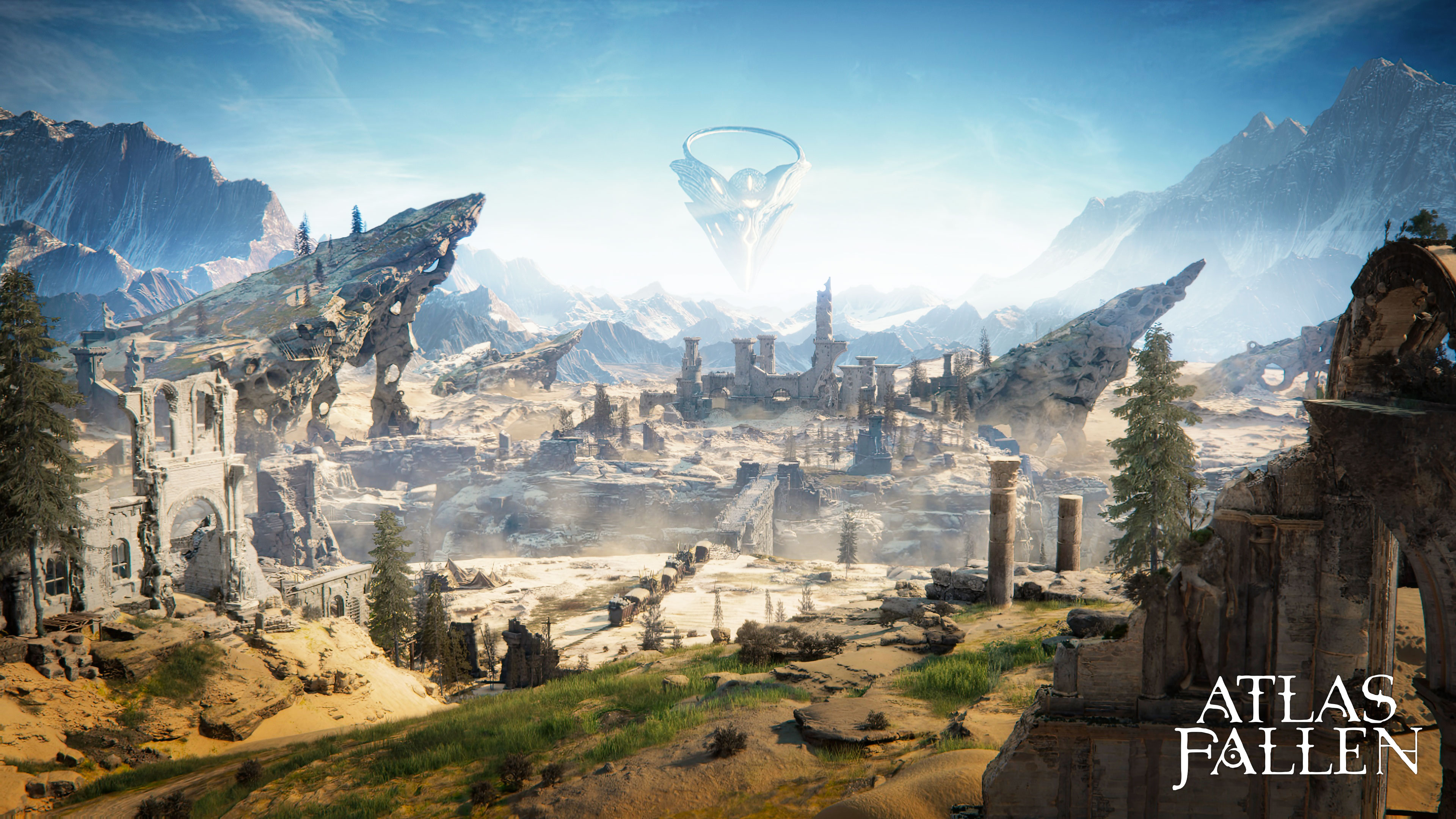Atlas Fallen preview: Horizon Forbidden West could learn from Atlas Fallen’s stand-out travel system
Cowabunga

Atlas Fallen makes getting around a joy.
This upcoming action RPG from Deck13 hadn’t crossed my radar at all, meaning I went in almost blind with no idea what to expect. Having recently completed Horizon: Forbidden West, I feared that my appetite for open-world environments had been sated. Fortunately, Atlas Fallen put something new on the menu, in the form of satisfying traversal mechanics that seamlessly blend into the game’s pleasing cycle of combat and exploration.
Atlas Fallen takes place in a dark fantasy world that reeks of apocalyptic desperation. Its open world is a vast desert, peppered with ancient ruins and precariously defended fortress cities. The people here adapt, or they die.
Our protagonist, wielder of a cursed magic gauntlet, makes their way across this world not on horseback, but by using their arcane power to surf across the dunes. As you run, a simple tap of the left stick will cause your character to start surfing, bringing about a satisfying burst of speed and the pleasing sound of sand gliding underfoot. The animation is fluid and seamless. It makes you feel like a cool sand wizard – a feat accomplished by very few games.
Atlas Fallen makes you feel like a cool sand wizard – a feat accomplished by very few games
In addition, Atlas Fallen makes generous use of verticality in its environments, offering the player a generous double jump, as well as the ability to perform a rapid air dash. In addition to its more obvious use for outmaneuvering enemies in the game’s action-heavy combat, the fluidity of these jumps and dashes makes movement a delight.
The game’s layout not only encourages exploration but also rewards unorthodox solutions to traversal challenges. Climbing on buildings, diving across precarious terrain, and zipping through the air are all encouraged by Atlas Fallen’s environmental design which, while sometimes clunky, gets top marks for ambition.
Travel sickness

Even the very best open-world games often struggle to deliver satisfying traversal, often relying on fast travel to allow players to skip the journey altogether.
Sign up for breaking news, reviews, opinion, top tech deals, and more.
Often, it’s a matter of summoning a mount out of thin air, saddling up, and setting off. This trend is common, found in more recent offerings such as Assassin’s Creed: Valhalla to more old-school classics like Skyrim. While not game-breaking by any stretch, this process adds a jarring interstitial moment to proceedings that breaks up the flow of travel. Once you summon your mount, you’ll need to spend a few moments searching for it, frantically wheeling the camera about in search of your newly manifested horse.
At best, this is a swiftly forgotten momentary diversion but, at worst, it can lead to immersion-breaking shenanigans. Who could forget Roach the horse in The Witcher 3, whose dogged attempts to reach you would often result in him getting stuck in a ditch or on a roof? While hilarious, I doubt that this is the sort of emotion that CD Projekt Red was hoping to elicit as you explore its dark fantasy world.
Even the very best open-world games often struggle to deliver satisfying travel
Many open-world titles offer surprisingly constrained traversal methods. Horizon: Forbidden West is a gorgeous, thought-provoking open-world RPG in which protagonist Aloy can tame and ride mechanical beasts. However, should she seek to climb a difficult mountain, she’ll be restricted to using a set of pre-ordained handholds which offer little by way of player choice.
Conversely, Atlas Fallen gives you a set of tools and lets you have at its world with gusto. While your best-laid plans may not always get you from A to B, the combination of jumps, air dashes, and sand surfing not only gives your character a sense of momentum but allows you to apply that momentum to challenges in the environment at will.
Off the rails
Atlas Fallen leans into movement in a big way, offering challenges as you tool about that reward creative use of jumps, dashes, and surfing. During my hands-on, I encountered a series of light beacons. When activated, the first of these shone a beam of light in the direction of the next, requiring me to reach the marked location within a time limit, activate the next beacon and continue along until I reached the treasure.

The game didn’t mind how I achieved this. I could elect to surf my way along the ground or try a risky leap between some rock formations, either way, it was up to me as to how I might complete the challenge. The time limit forced me to think on my feet, getting creative as I raced towards the objective. What fascinated me is the way in which my ally, who had joined the game via its Diablo 4-esque co-op mode, was able to use an entirely different method to reach our shared goal.
Atlas Fallen has taken a big risk by opting to reward creativity at the expense of channeling players down more polished routes
Once the two of us met at the objective, we were rewarded with a big treasure chest for our troubles and elected to continue on our merry way. However, this humble, understated challenge from Atlas Fallen’s open world stuck with me.
Atlas Fallen has taken a big risk by opting to reward creativity at the expense of channeling players down more polished routes. However, in doing so, it’s opened up a new avenue of player agency, encouraging a playful sort of platforming not often found outside the likes of Super Mario: Odyssey.
This refreshing approach to travel is cause for celebration and, if we’re lucky, will inspire other developers to put player agency first when designing their own travel systems.
Atlas Fallen releases on August 10 for Xbox Series X|S, PS5, and PC.

An editor and freelance journalist, Cat Bussell has been writing about video games for more than four years and, frankly, she’s developed a taste for it. As seen on TechRadar, Technopedia, The Gamer, Wargamer, and SUPERJUMP, Cat’s reviews, features, and guides are lovingly curated for your reading pleasure.
A Cambridge graduate, recovering bartender, and Cloud Strife enjoyer, Cat’s foremost mission is to bring you the best coverage she can, whether that’s through helpful guides, even-handed reviews, or thought-provoking features. She’s interviewed indie darlings, triple-A greats, and legendary voice actors, all to help you get closer to the action. When she’s not writing, Cat can be found sticking her neck into a fresh RPG or running yet another Dungeons & Dragons game.